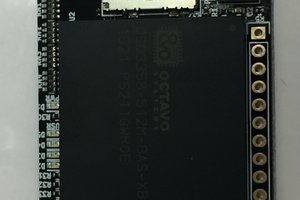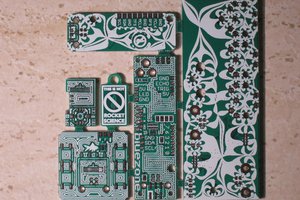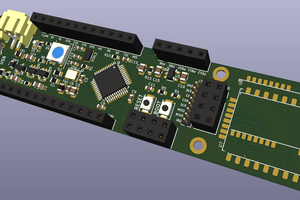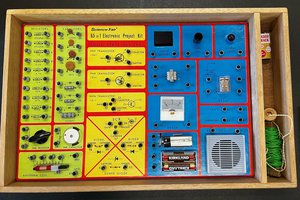Disclosure statement: Some production assistance was provided by a sponsor, the PCB manufacturing outfit PCBWay, in exchange for an unbiased review.
Now, back to our program:
This journey started with a prototype calculator emulation project that I ended up documenting over at https://hackaday.io/project/188722-the-pico-16c-an-homage-to-the-venerable-hp-16c
The prototype was a bit sketchy; I didn't care for the cheap keypads I used, and the labelling could be better, so I thought it would be cool to use real keyboard keyswitches. I started designing a printed circuit board to provide a basis for the device.
Meanwhile, the folks at PCBWay took note of the interest in my prototype and offered to sponsor PCB production in return for a few remarks about the service and so forth. Check the end of this post for that.
As the PCB design progressed, I noted similarities with macropad devices based on the Raspberry Pi Pico, and decided to make use of some unused space for a couple of rotary encoders, in case I wanted to make use of them in the future. I had no immediate plans.
I completed the design of the PCB, and decided at that point to take PCBWay up on their offer. Using the convenient PCBWay KiCAD plug-in, I bundled up the gerber files and sent them off. Within a week or so, I had received 5 copies of my board, which you can see in the gallery.
Note that there is one error on the board, which was completely my fault (not the manufacturer's). I failed to make one connection, which is easy enough to bodge in on the back of the board (see photos).
The files to construct the Pico-16C (as I called it) are found on my github at https://github.com/someyob/Pico16cV2. This includes software and 3d print models I used for the build. The software will be forever in development.
MEANWHILE, I started playing the very excellent game Baldur's Gate 3 on my PC. I noted the many keyboard controls available, and wondered if I could make use of the macro pad capabilities. So, I acquired some more key switches, a 2nd Pico, and made what I believe to be the first ever Baldur's Gate Macro Pad. You can find the github for that project here: https://github.com/someyob/BG3MacroPad. It works very well. Still play-testing and adding functionality. Is it silly? Yes. Do I love it? Also yes.
So, regarding PCBWay, here are my thoughts and observations:
1) Ease of transaction. It couldn't have been easier to get this done. The KiCAD plug-in is convenient, and PCBWay reviews the design, gets it into production and out the door very quickly.
2) Quality. The board looks fantastic, and populating the components was a breeze. I was really impressed. I have used their competitor in the past, and the quality of the board matches anything I've had done elsewhere.
3) Price. Note that I did not pay for either manufacture or shipping for this project. A 100mm x 100mm is very inexpensive to get done. As this board is 200mm x 125mm, the cost does go up. I generally try to make projects smaller to keep it at that magical $5 price. Note, however, that I did have to pay duty in this country to import those boards.
4) Conclusion. I highly recommend getting PCBs done in this way if you want to take your protoboard projects to the next level. I have made many PCBs using copper clad boards and etchant. Once my projects became too complex, this was no longer feasible.
 KJoh
KJoh
 Michael Welling
Michael Welling
 Arya
Arya
 Flavio
Flavio
 Tom Thoen
Tom Thoen